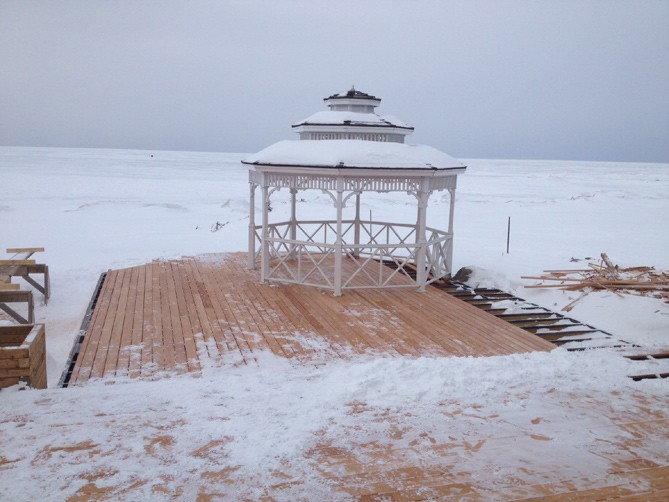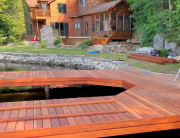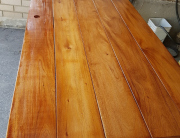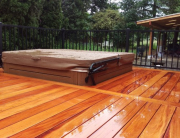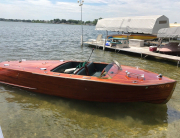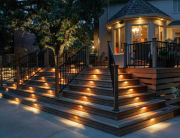Fijian Mahogany Decking Review
Tools
1) The first thing that comes to mind is the degradation of my tools. Working with other tropical hardwoods, I am forced to replace premium carbide-tipped parts like drill bits and saw blades often multiple times per job. This expense is always billed to my clients, as they understand the necessity of it, with woods like Ipe that contain sand. Fijian mahogany decking does not have this issue; despite its strength, it can be drilled and sawn with regular tools and does not degrade them nearly as quickly as other hardwoods. This is something that fine furniture and boat makers have known for centuries, another reason why mahogany is the most desirable wood on the planet.
Installation
2) There is a wide variety of decking installation options available these days to prospective hardwood deck owners. These options vary in difficulty, appearance, and suitability. While the ‘hidden-clip’ style becomes more popular, it requires much more man hours and ultimately does not provide any protection from some hardwoods’ desire to warp and twist. Fijian Genuine mahogany decking can be installed in literally almost any way possible. Extremely dense woods like Ipe must have holes pre-drilled, effectively doubling the labour required for face-screwing method, a cost passed on to the client.
Protection
3) Before decking is installed, I talk to my clients about staining, sealing, maintaining, and protecting their hardwood deck. Some hardwoods are extremely painstaking to stain. Wood such as Ipe requires a good amount of luck to protect. Because of its chemical characteristics and density, most sealants and stains will not work at all, and the ones that are known to may not be suitable in your environment. I hear many horror stories from tropical hardwood deck owners, but Fijian mahogany decking has none of those issues. It uptakes most oil-based products very well, giving deck owners a great variety of options.
Acclimation
4) Acclimation of tropical hardwood decking is fairly straightforward, but I have seen some mishaps. Depending on what humidity the wood was air-dried at, boards may warp during acclimation, leading to the usage of a tool known as the Hardwood Wrench which basically bends the wood in place where it can be screwed down. Don’t even get me started on the problems of doing this with dense hardwoods. Due to the variable moisture content in certain tropical wood such as Ipe, use of the Hardwood Wrench has become everyday practice for the installation of decks made from it. One Ipe deck may require several Wrenches as they sometimes break on woods like that. All genuine mahogany decking is kiln-dried and won’t generate this issue, unless installed in extreme climates such as the middle of a Canadian winter.
Weight
5) The last thing is just sheer weight. Working with lighter material saves a lot of man hours and back ache during a project. Unlike other tropical hardwoods, genuine mahogany does not derive its strength from density, but rather from its internal grain structure. When I explain this to clients, they often give me an inquisitive look, so I present them with this analogy: the rigidity of carbon fibre surpasses that of steel, but it has low density and thus low weight, making it extremely useful in many applications. This is another thing fine furniture and boat builders have known for centuries and yet another reason why genuine mahogany is so desirable.
Fijian mahogany decking is available in Toronto through Contact Us Today!
